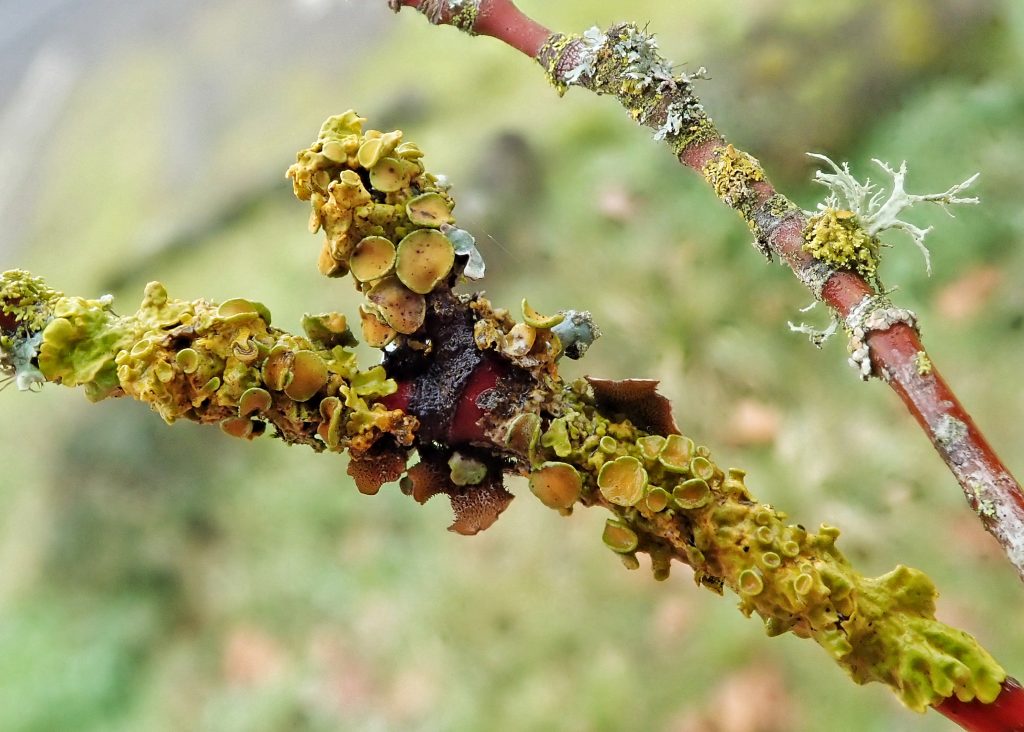
You may have noticed that I seldom give common names for lichens and bryophytes. Possibly this is even frustrating to you. Possibly it is perceived as elitist, but that is most certainly not my intent. It is just that very few spore producing lifeforms have accepted common names.
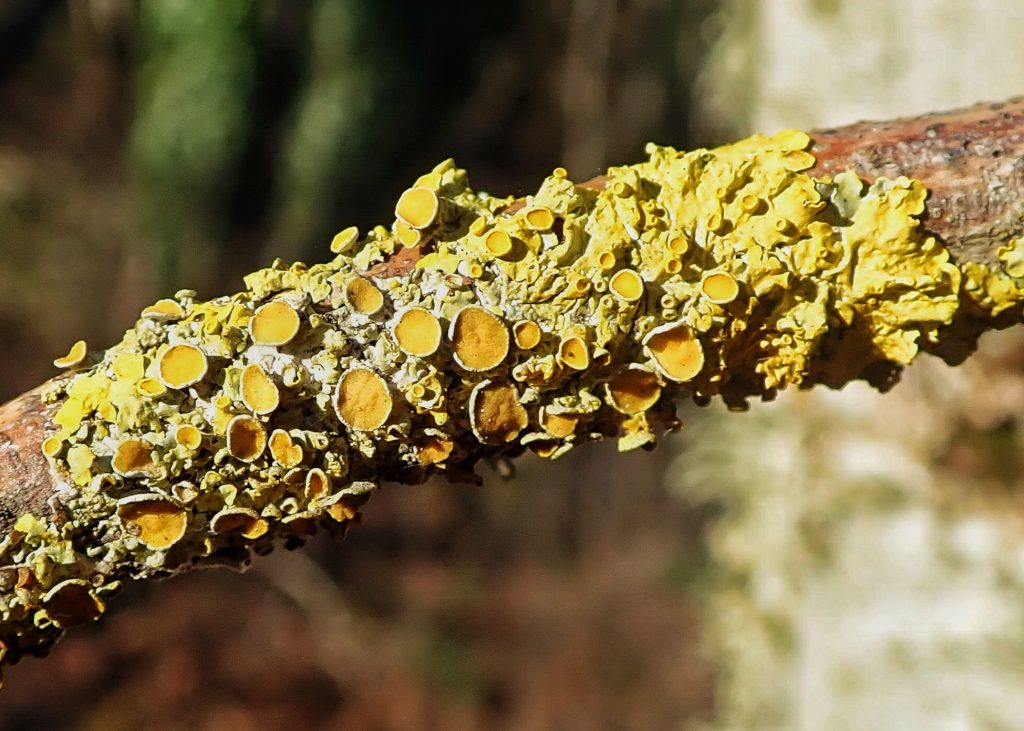
Mushrooms and ferns are sometimes exceptions because lay people have developed a relationship with them, and exchange information about them, and a nomenclature has more or less been codified. This is not the case with the vast majority of lichens, mosses, and liverworts.

Add to this the facts that, since most people don’t have the tools to identify them to species, many superficially similar species will be given a blanket name, and the common names people use for them vary widely from region to region (and even person to person), and you’ll see why these conversations happen;
Lay person pointing at a lichen- “What’s that?”
Lichenologist (or at least someone who has studied them to some extent)- “Xanthoria parietina.”
Lay person-“No, what’s its real name?”
Lichen enthusiast, with a blank stare, “Xanthoria parietina.”
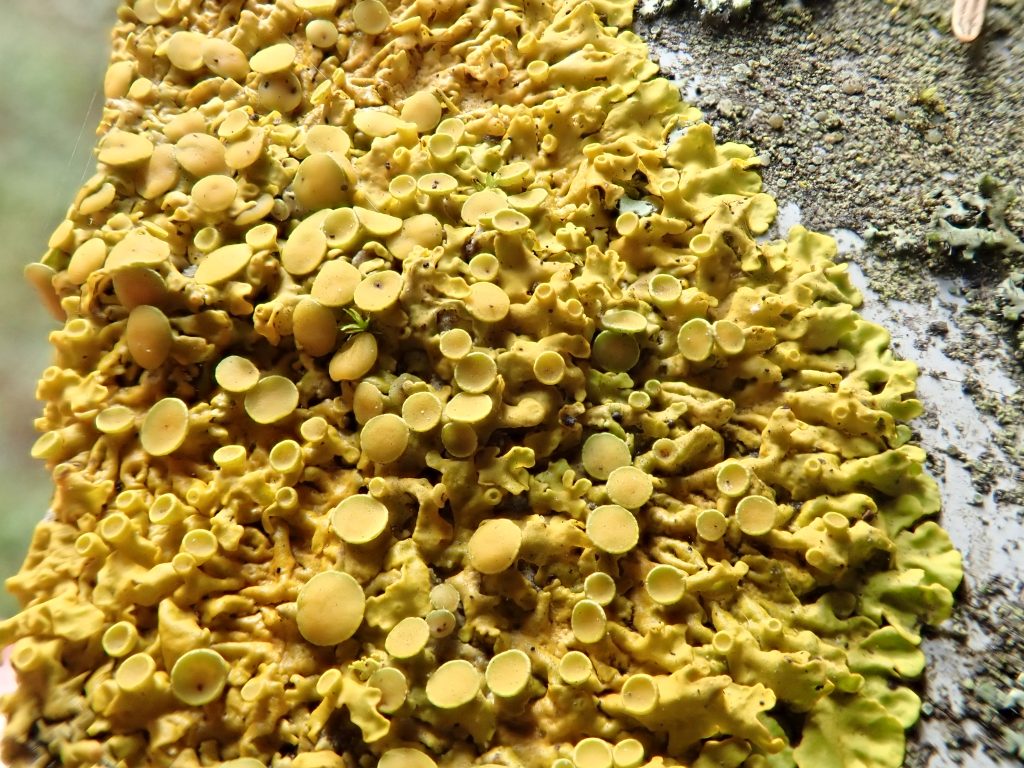
Here is an incomplete list of common names for this lichen; common orange lichen, orange wall lichen, golden shield lichen, yellow scale, maritime sunburst lichen, common sunburst lichen, shore lichen, bird-perch lichen…You can see where this could be a detriment to effective communication. Whereas you can literally go anywhere in the world and say Xanthoria parietina to a lichen enthusiast, and they will know exactly the species you are talking about.

I do understand the desire for words that one can understand and use for labels. That is why I always have an etymology section at the end of the post. Knowing what the Latin or Greek roots are helps me to understand, and more importantly to remember, the scientific name.
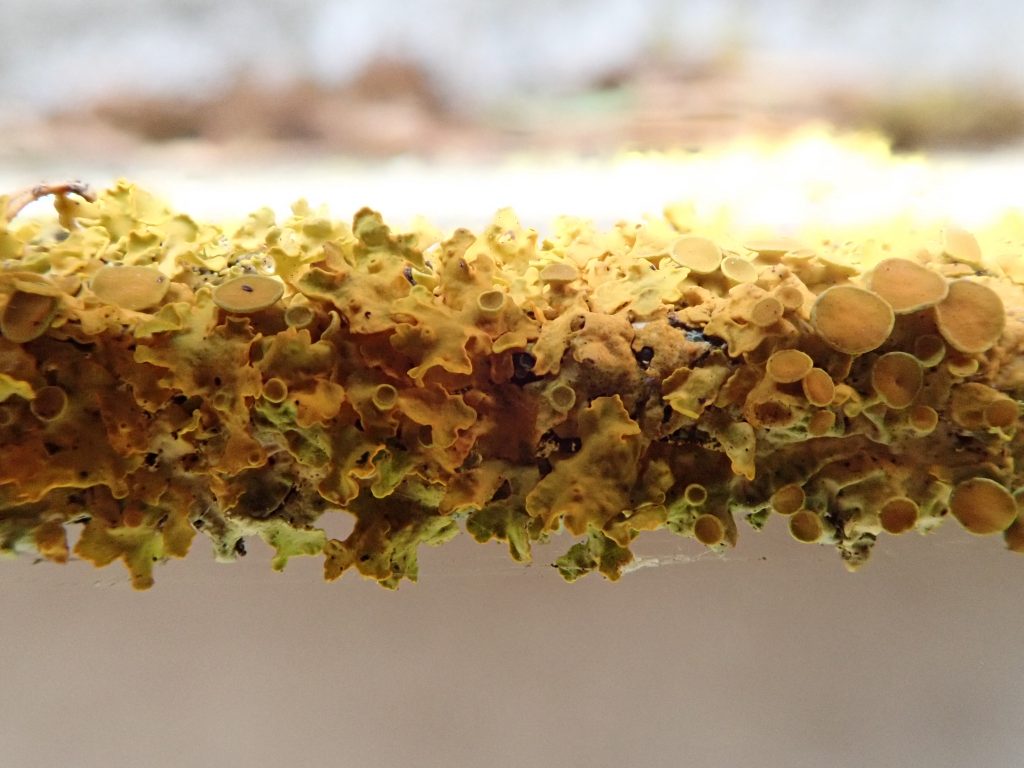
As for Xanthoria parietina itself, it is a very interesting lichen. For one thing it is almost the opposite of Lobaria pulmonaria, the last lichen I discussed, in that it actually prefers high nitrogen locations, and is often found in areas of eutrophication (oversaturation by phosphates, nitrogen, and other fertilizing compounds). X. parietina also has a very high tolerance for pollution, including carbon monoxide, heavy metals and bisulphites. For this reason it is often found near heavily industrialized sites, and is a useful biomonitor there.
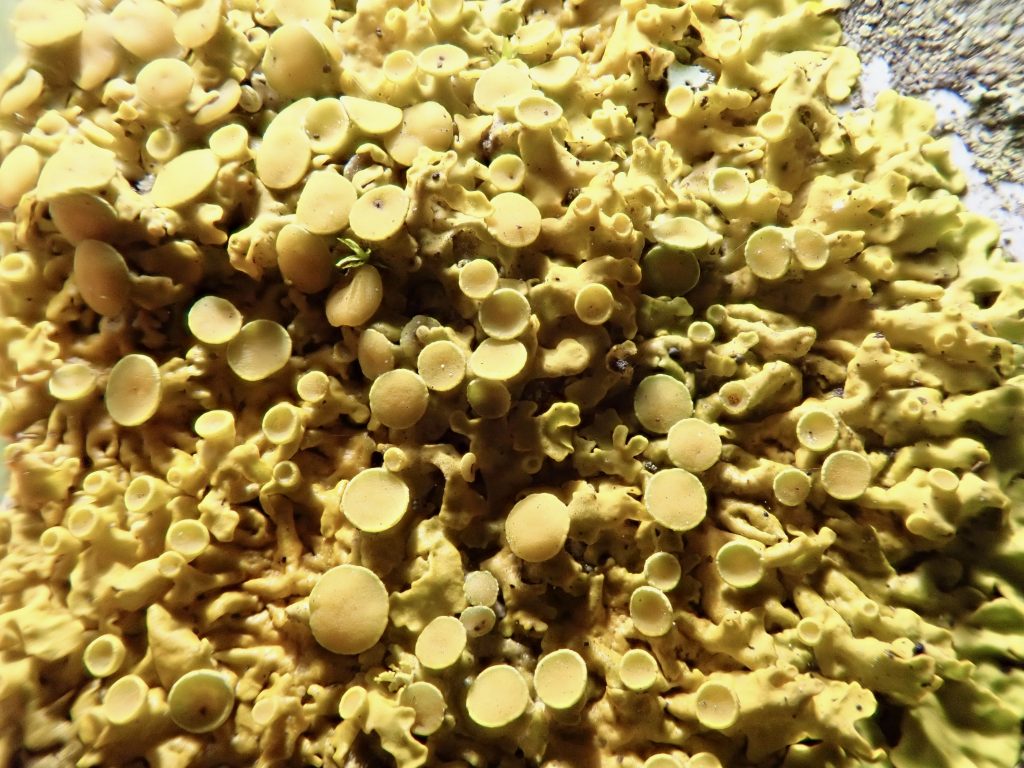
This species prefers sunny locations, and grows thicker and yellower thalli there, adaptations to ward off harmful UV rays and protect the algal photobiont. In shady locations it is thinner to allow more light gathering, and is greener because the thinner cortex exposes more of the color of the green algae, which comprise about 7% of the thallus.
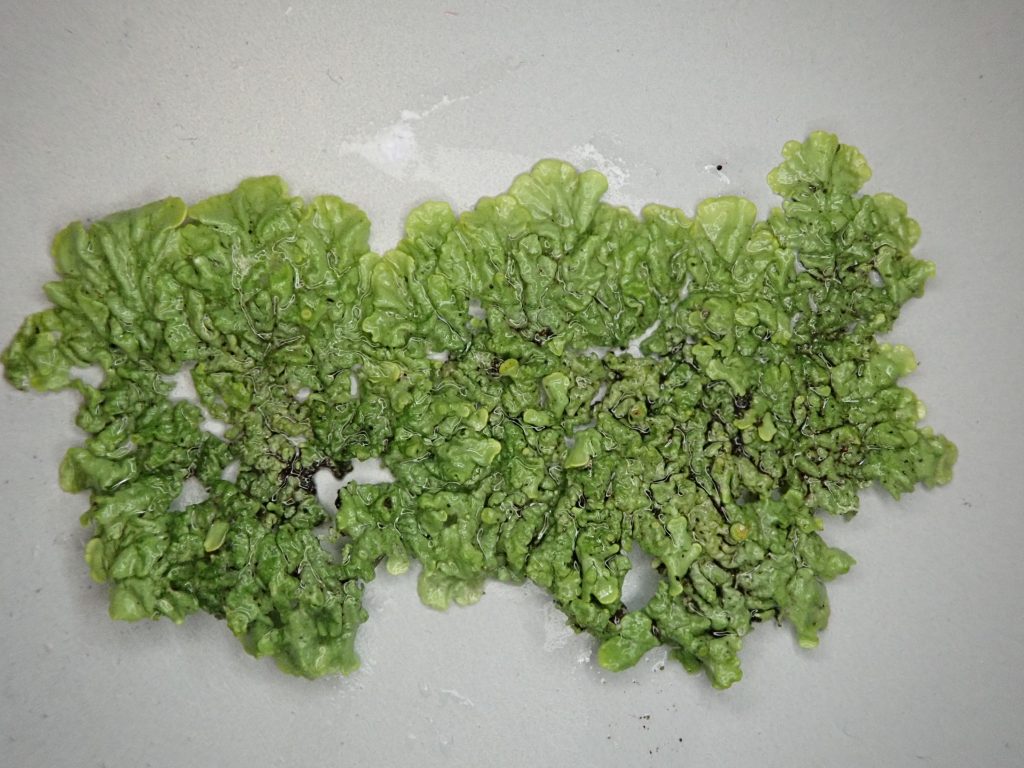
Historically this lichen has been used to produce a yellow dye. Ancient herbalists used it to treat jaundice, because it was yellow. I have no idea whether it was effective for that. But modern science has found that an extract of the whole lichen, and its secondary metabolite parietin, had definite antimicrobial and anticancer effects. Because it is very common, with a present worldwide distribution, and has already been extensively studied, making it easier to attach genes to characteristics, it was also selected as the first lichen to have its genome completely sequenced. Pretty cool for something you can find growing on the foundation plantings at your local industrial park!
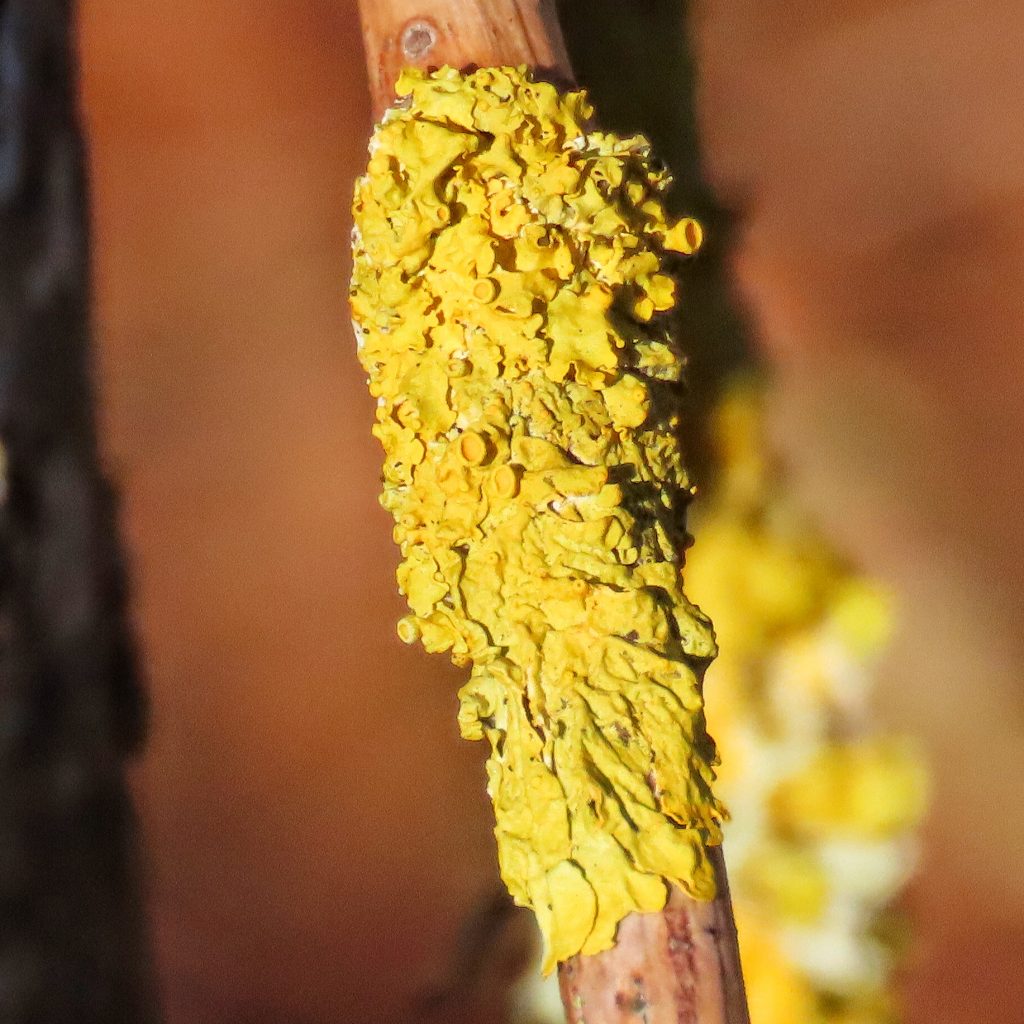
Description– Foliose thallus that is yellow, green, or orange (I’ve never seen an orange one; it seems from photos that orange thalli may be more common in maritime or desert specimens, but I can’t find confirmation of the mechanism for that); fairly narrow (1-4mm) lobes which are concave near the outer edge; usually lacks isidia and soredia, but has abundant apothecia; flattened (appressed) rather loosely to the substrate. Ventral surface is white to very light yellow, brown, or green.
Similar species– Xanthoria elegans is tightly attached (adnate) to the substrate, is almost always vivid orange and found on rock, and has convex lobes.
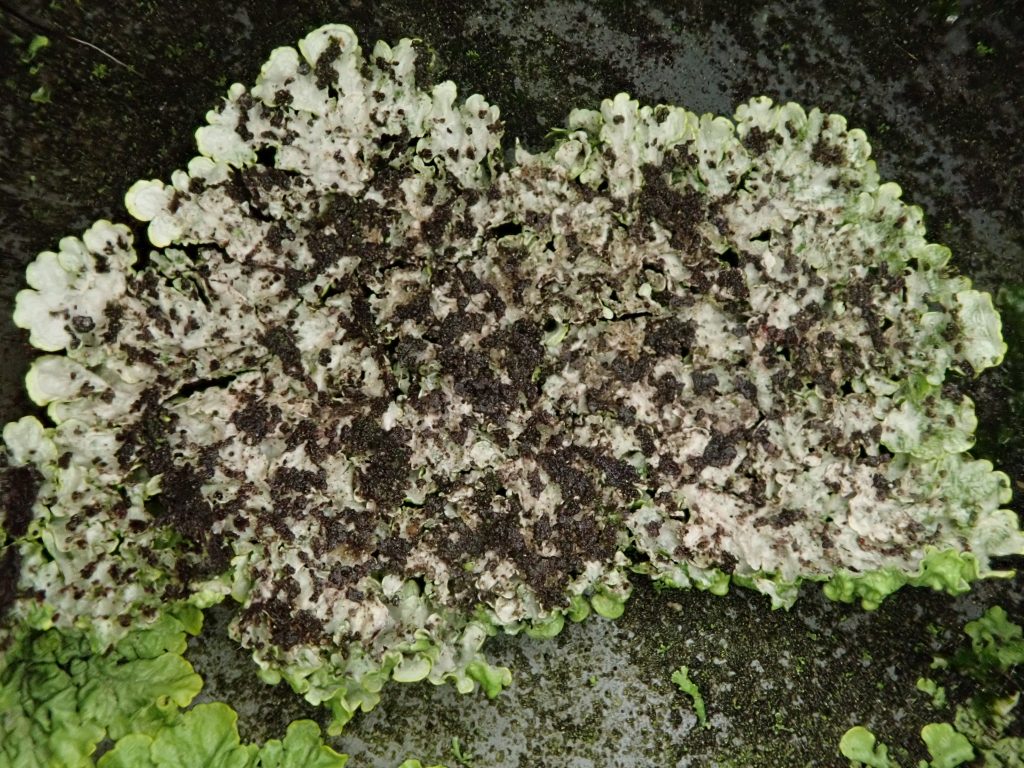
Habitat– Most often found in high nitrogen areas. Grows on trees, logs, and often on fiberglass; since it is lime loving (calcicolous) it can often be found on concrete and mortar, and other alkaline substrates; less common on other rock unless it is enriched by bird droppings.
Range-Native to Europe; spreading through North America and the rest of the world, usually spreading from ports and most common in industrial areas.
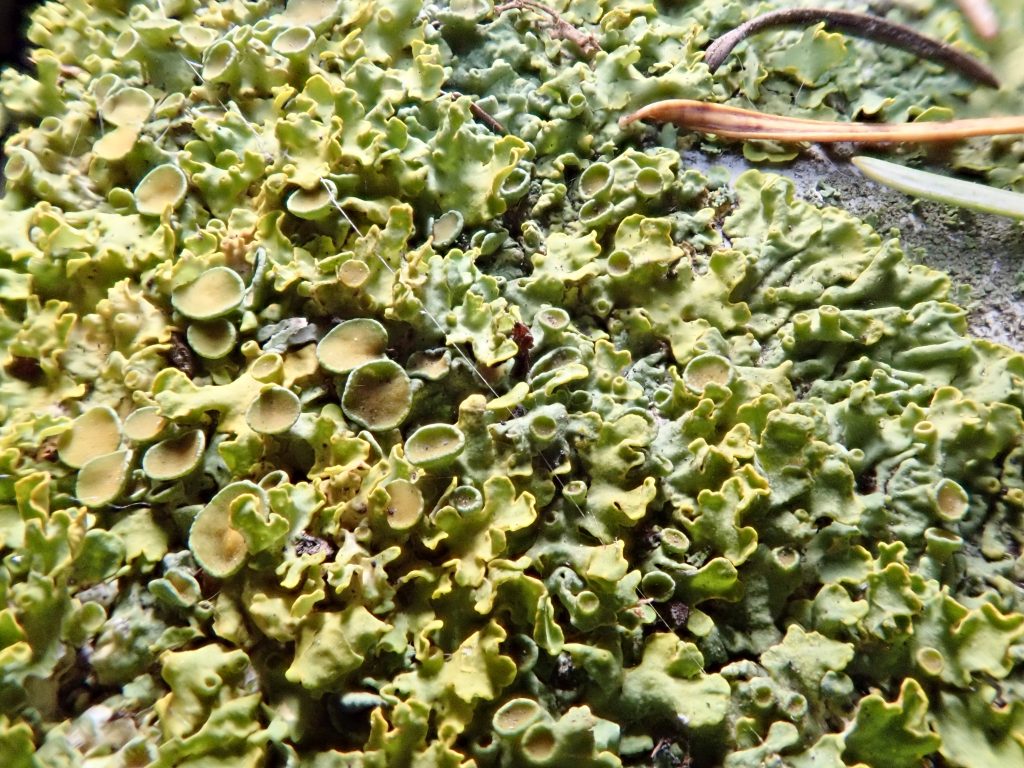
Eaten by– various gastropods are known to feed on this lichen.
Etymology of names– Xanthoria is from the Greek for ‘yellow’, referring to the most common color of members of this genus. The species epithet parietina is from the Latin for ‘small wall’ and refers to a common habitat for this species in its native Europe.
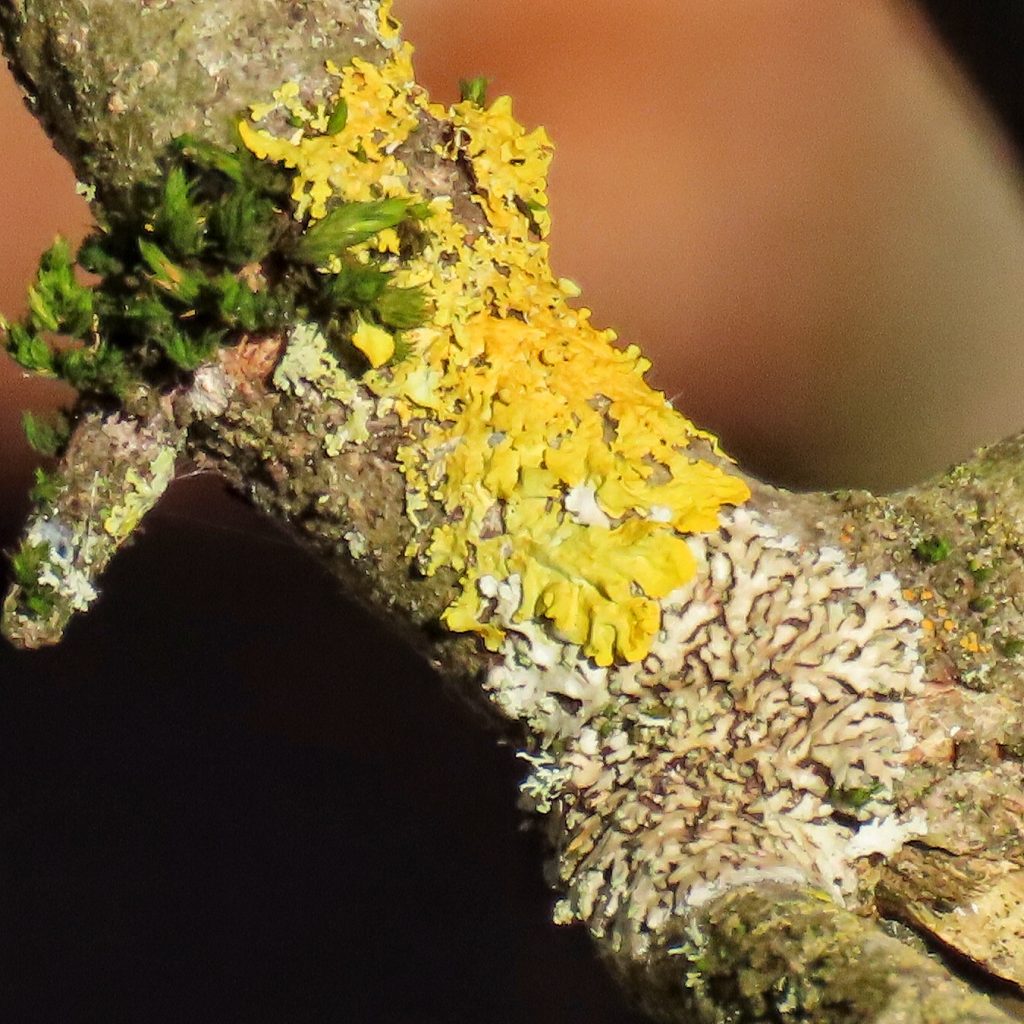
https://lichenportal.org/cnalh/taxa/index.php?taxon=56389&clid=1016
https://www.ncbi.nlm.nih.gov/pmc/articles/PMC4425054/
https://www.marlin.ac.uk/species/detail/1798
https://link.springer.com/article/10.1007/s11356-018-3155-z
https://en.m.wikipedia.org/wiki/Xanthoria_parietina
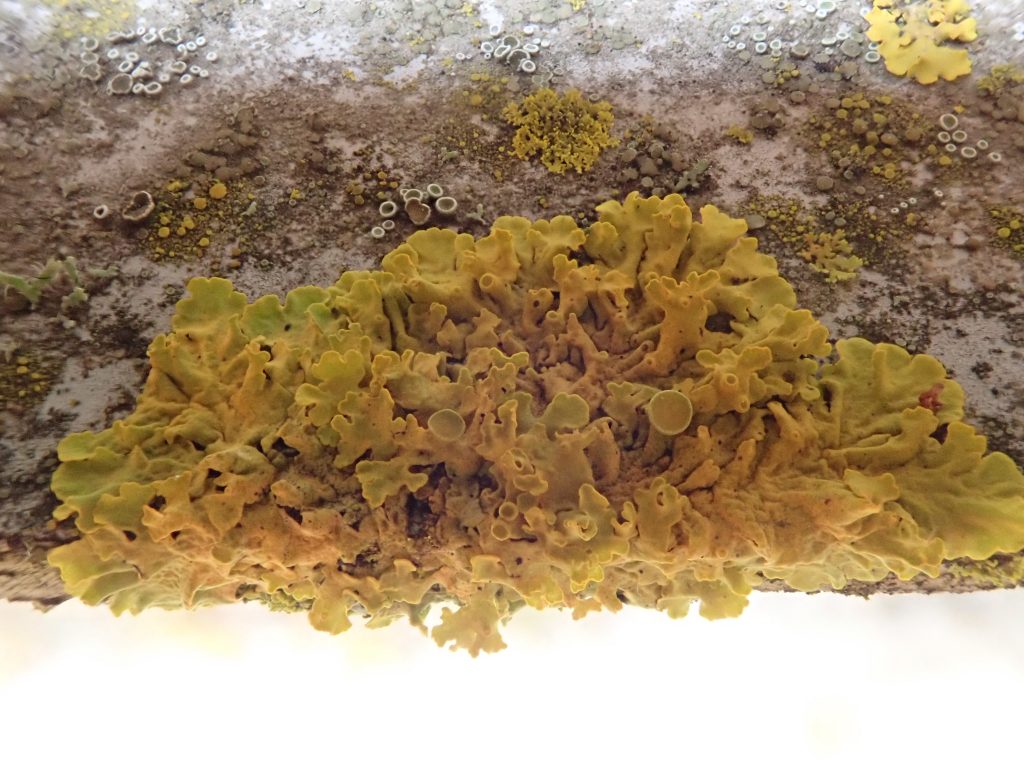
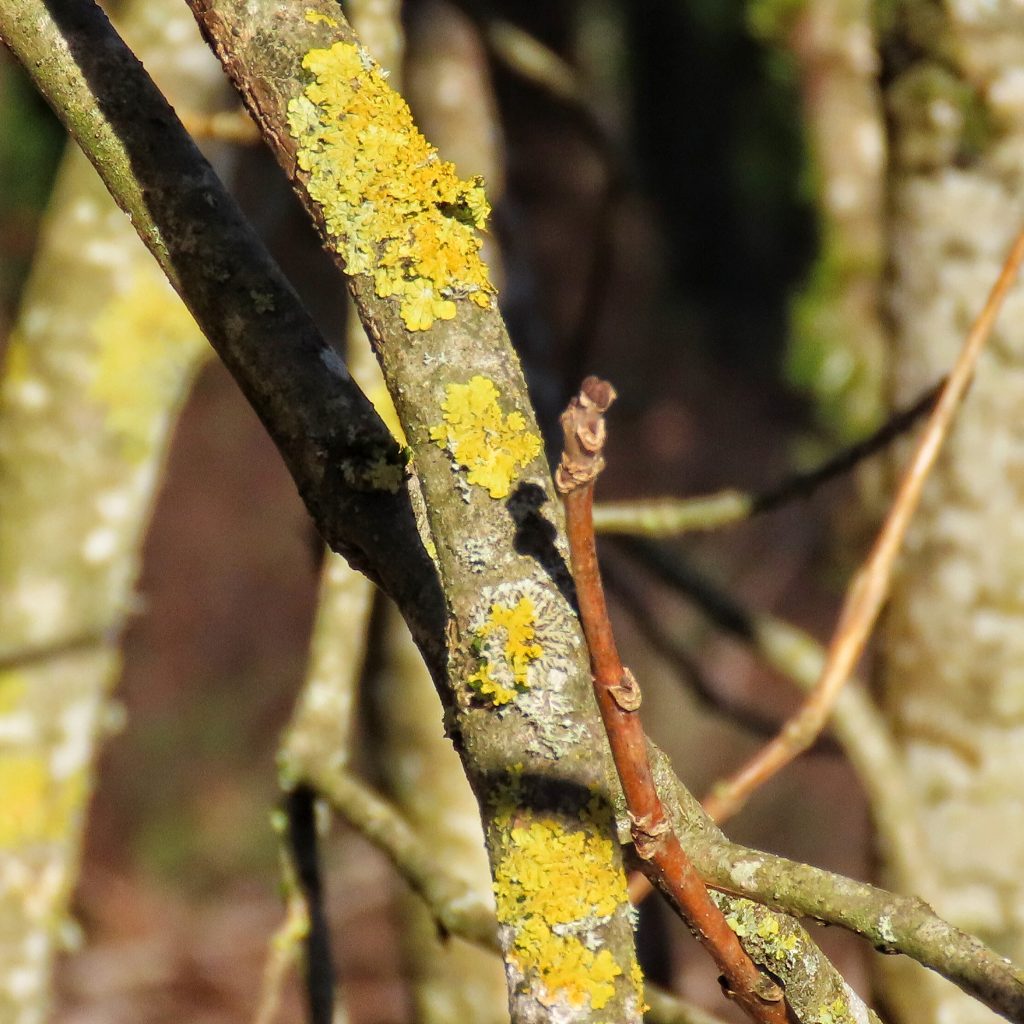
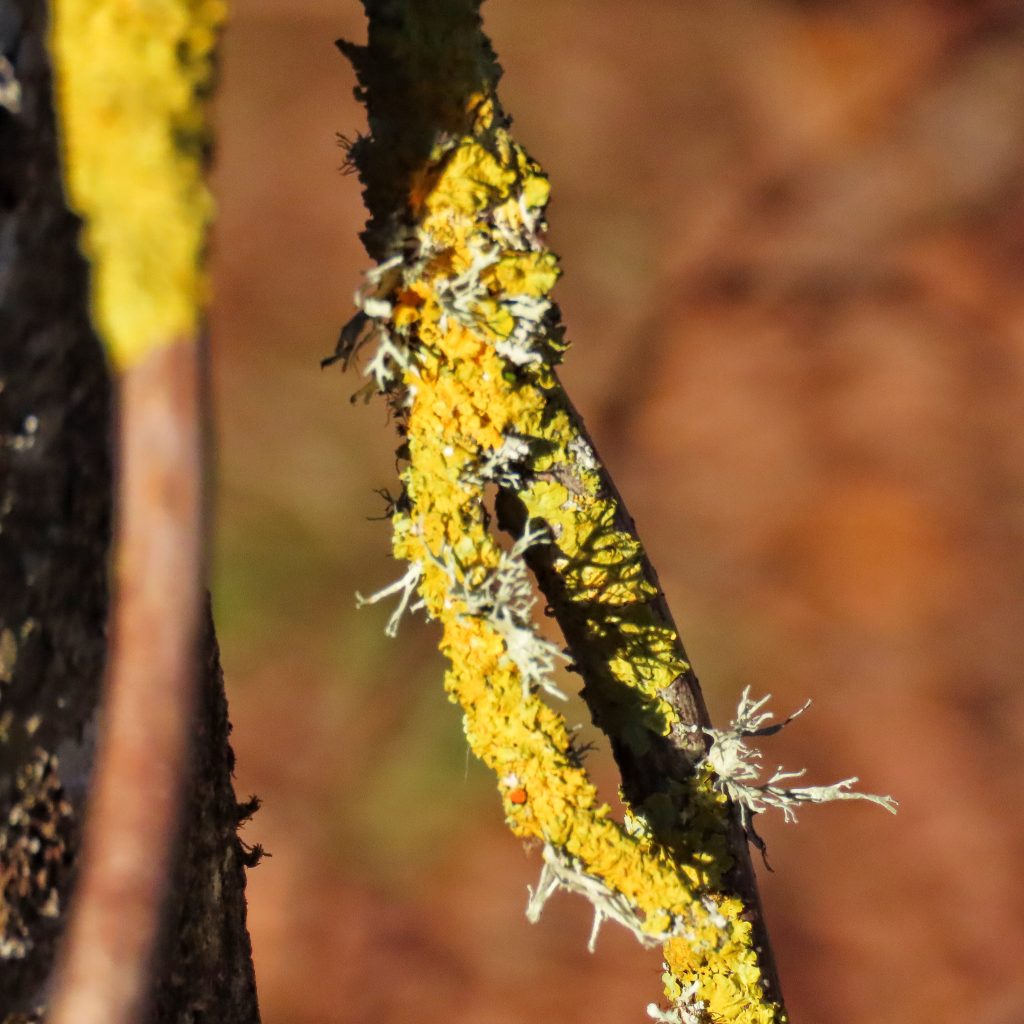
Fascinating! Do you have any idea why it was chosen as the first lichen to have its genome sequenced?
Because it is very common, with a present worldwide distribution, and has already been extensively studied, making it easier to attach genes to characteristics.
I added that to the post. Should have said it at the time. 🤦🏻♂️
Thank you ☺️
Lovely!